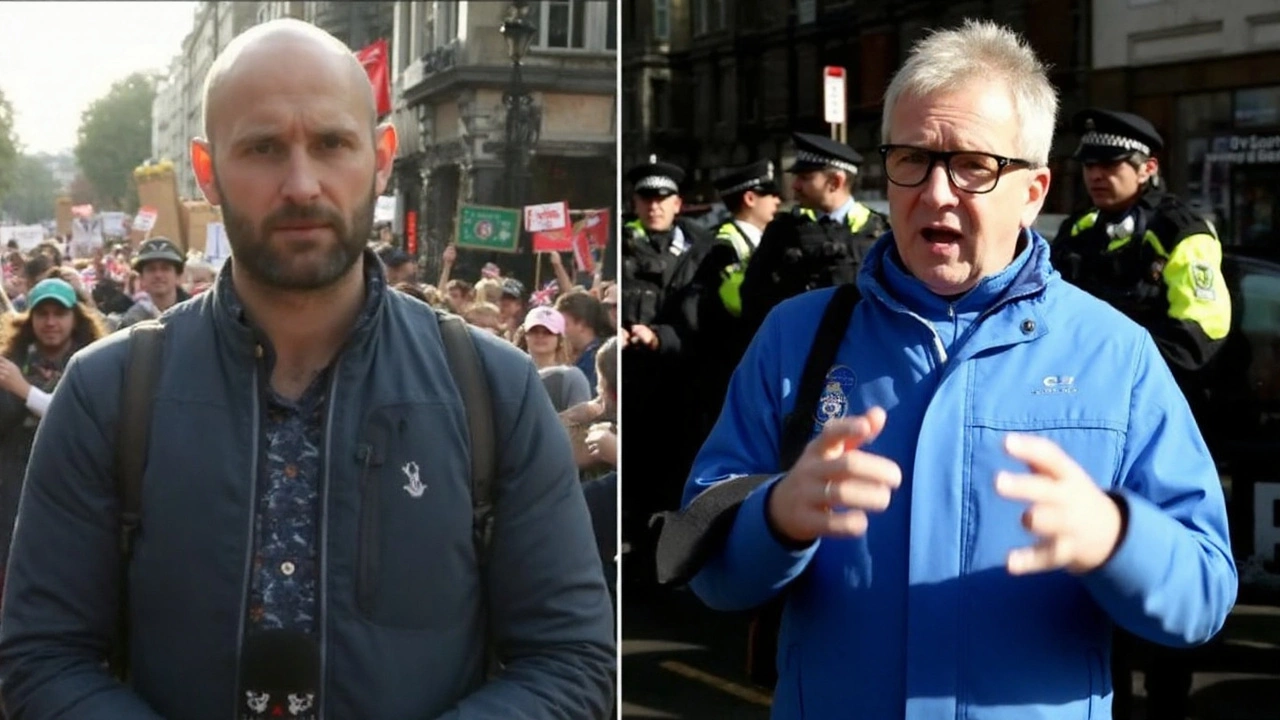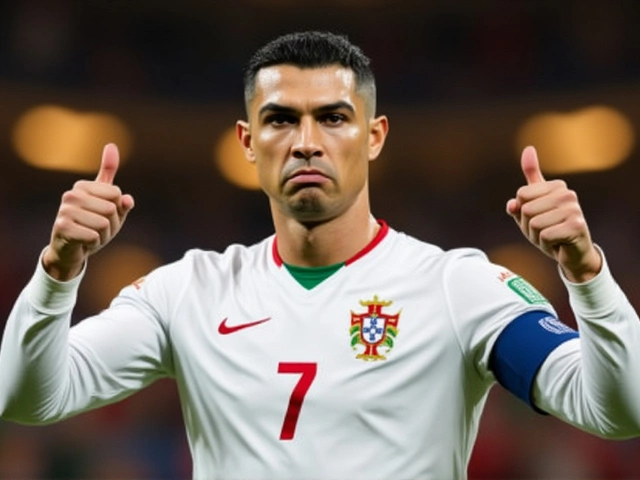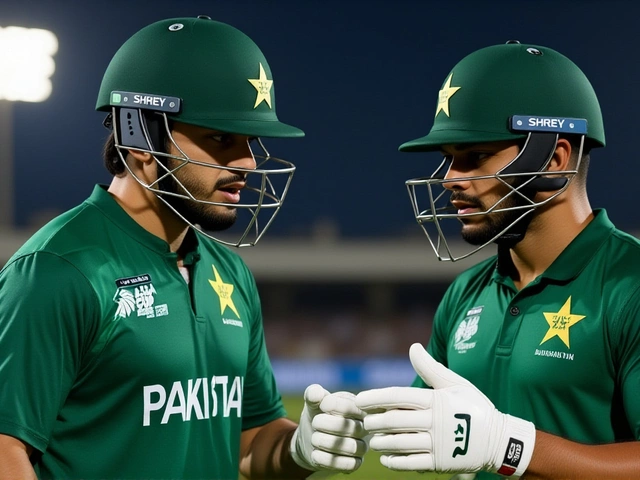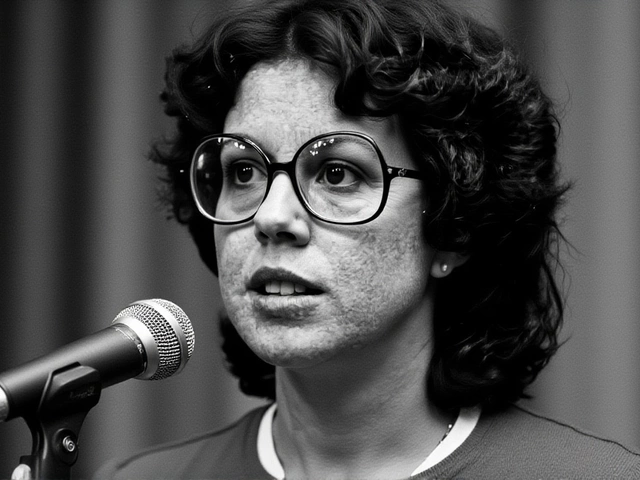Violence erupts as rival marches flood central London
A tense Saturday in central London turned volatile as a huge far-right march collided with a smaller counter-protest and a heavy police operation. The Metropolitan Police said officers faced "significant aggression" and "unacceptable violence" while trying to hold lines between the two groups. By nightfall, the force confirmed 26 officers injured, four of them seriously, and nine arrests linked to disorder.
Organized by anti-immigration campaigner Tommy Robinson, the "Unite the Kingdom" rally drew an estimated 110,000 to 150,000 people — far beyond what officers expected. The turnout makes it one of the biggest right‑wing street mobilizations in Britain in recent memory, a scale that shifted the day from routine protest policing to a full public order test.
Across the government district around Whitehall, police formed cordons to keep rival groups apart. The counter-demonstration — billed as a "March against Fascism" — gathered roughly 5,000 people within walking distance of the main rally. Despite efforts to separate them, flashpoints still emerged between protesters and officers, and the main confrontations involved police trying to control surges and hold routes open.
Robinson, who founded the English Defence League and has long rallied against immigration, set the tone of the day with a message built around border enforcement and national identity. Union flags and anti-immigration banners were everywhere in the main crowd. The counter-march pushed back with chants against racism and authoritarian politics, warning about intimidation of minorities and the normalising of street violence.
By mid-afternoon, the sheer size of the main rally changed the dynamics. Police had to manage not just two opposing camps but also the risk of splinter groups breaking off down side streets. Officers reported sustained aggression as they tried to move crowds and keep key junctions clear. Injuries among demonstrators were not immediately known, and the Met did not provide a full breakdown of the arrests.
The images — officers pushing up, batons drawn at times, and dense crowds squeezed behind barriers — will dominate political debate in the coming days. The question that follows these scenes is simple: how did a demonstration of this scale build so fast, and what does it say about the moment Britain is in?
The numbers, the mood, and the politics behind a combustible day
This was not a fringe gathering. The size alone shows how immigration has become the country’s sharpest wedge issue. It has been driving arguments over asylum hotels, small-boat Channel crossings, and the government’s offshoring plans. Street movements are feeding off that heat — and the reach of social media, where organizers can coordinate travel, share talking points, and frame the day before it even starts.
Counter-protesters, though smaller, were loud and organised. Their message: far-right street power thrives when unopposed. They came to Whitehall to visibly draw a line. Community groups that work with migrants and refugees say the online build-up to days like this often spills over into harassment in neighborhoods later on. That’s why they show up even if they’re outnumbered.
The Met’s language — "significant aggression" — suggests the operation crossed the line from facilitation to containment at several points. In big London operations, police often set conditions on routes and timings under public order laws, then adjust in real time as crowds swell. The force did not immediately detail what restrictions were in place on Saturday, but the injury count alone shows how hard it was to hold the ground between two hostile camps.
Nine arrests on a day of this scale might sound low, but it usually reflects a strategy of prioritising safety over mass detention while crowds are dense. Expect follow-up arrests from body-worn camera footage and social media clips. That’s become standard after large disorder, allowing detectives to build cases once the streets are calm.
Robinson remains a lightning rod. His supporters say mainstream parties ignore working-class concerns about migration and crime, leaving street protest as the only outlet. His critics point to a track record of agitation that brings violence in its wake and a pattern of targeting minorities. Both views were on display, sometimes within the same block, separated by lines of fluorescent jackets and a lot of shouting.
The scale also matters for Westminster. Ministers will face questions about resourcing for public order policing, and whether current laws are enough to keep rival groups apart when numbers balloon. The Met will have to explain how it planned for an event that turned out far bigger than its "most-likely" scenario. MPs will use the injury tally to make their point — some to demand tougher policing, others to warn that crackdowns can inflame tensions.
For people who live and work around central London, the weekend sounded different: sirens, helicopter noise, and long stretches of blocked streets. Businesses that rely on weekend footfall will count lost takings. Transport managers had to shutter bus routes and divert traffic to keep crowds from bottlenecking. It’s the unglamorous part of protest politics that rarely trends but always costs.
What comes next will hinge on whether this was a one-off surge or the start of a new rhythm of mobilisations. Organisers on both sides will claim momentum. The far-right crowd now has a number they can point to. Anti-fascist groups have a focal point for fundraising and volunteer drives. Police planners will quietly revise crowd models and refresh mutual-aid rosters for the next callout.
There’s also a broader backdrop. Across Europe and the US, hardline voices have gained airtime, using migration and culture-war themes to win clicks and seats. British politics is not insulated from that cycle. When the arguments stay online, the worst outcome is a bad evening on social media. When they jump to the streets at this scale, the cost is measured in injuries and overtime — and in communities who feel less safe walking home.
What stuck out on the ground was the intensity on both sides. The main rally carried a sense of defiance, buoyed by numbers. The counter-march kept its focus on showing up and not letting the other side claim the streets uncontested. In the middle stood the Met, counting injuries, collecting footage, and trying to keep a lid on a day that spilled over more than once. For anyone who wants calmer politics, that picture is going to be hard to shake the next time the words London protests start racing across a weekend timeline.
- Estimated turnout: 110,000–150,000 (far-right rally); ~5,000 (counter-protest)
- Police injuries: 26 officers (4 serious)
- Arrests: 9
- Location: Central London, including Whitehall area





